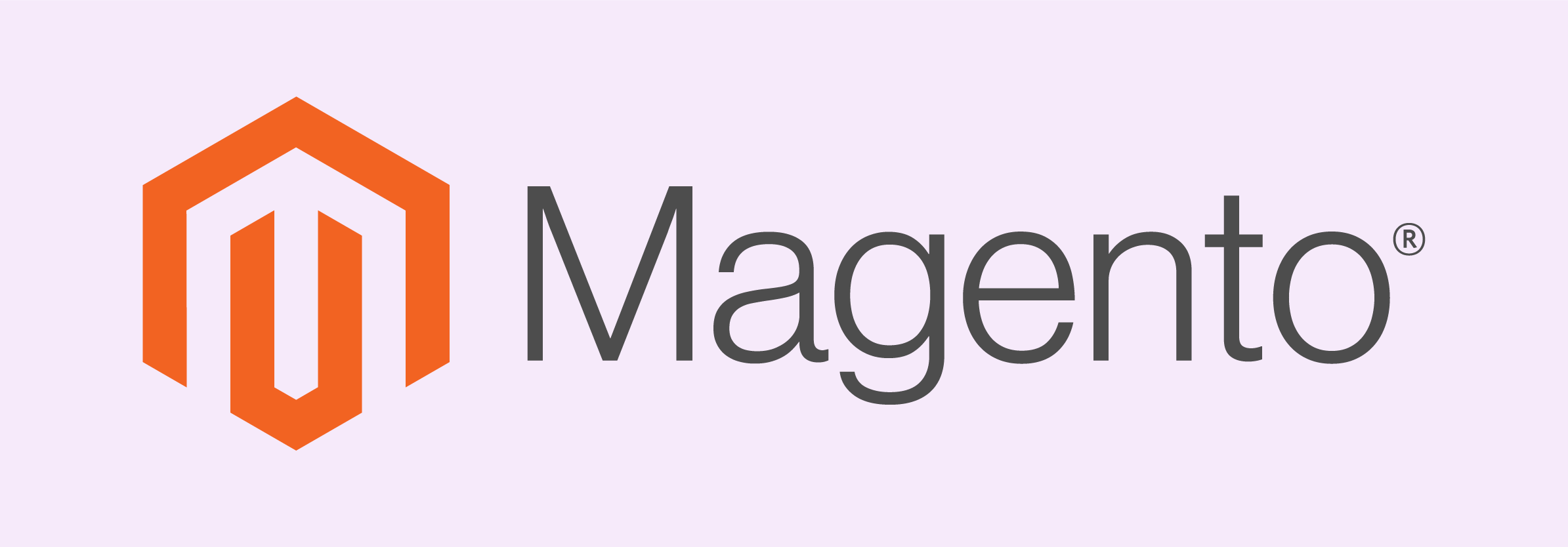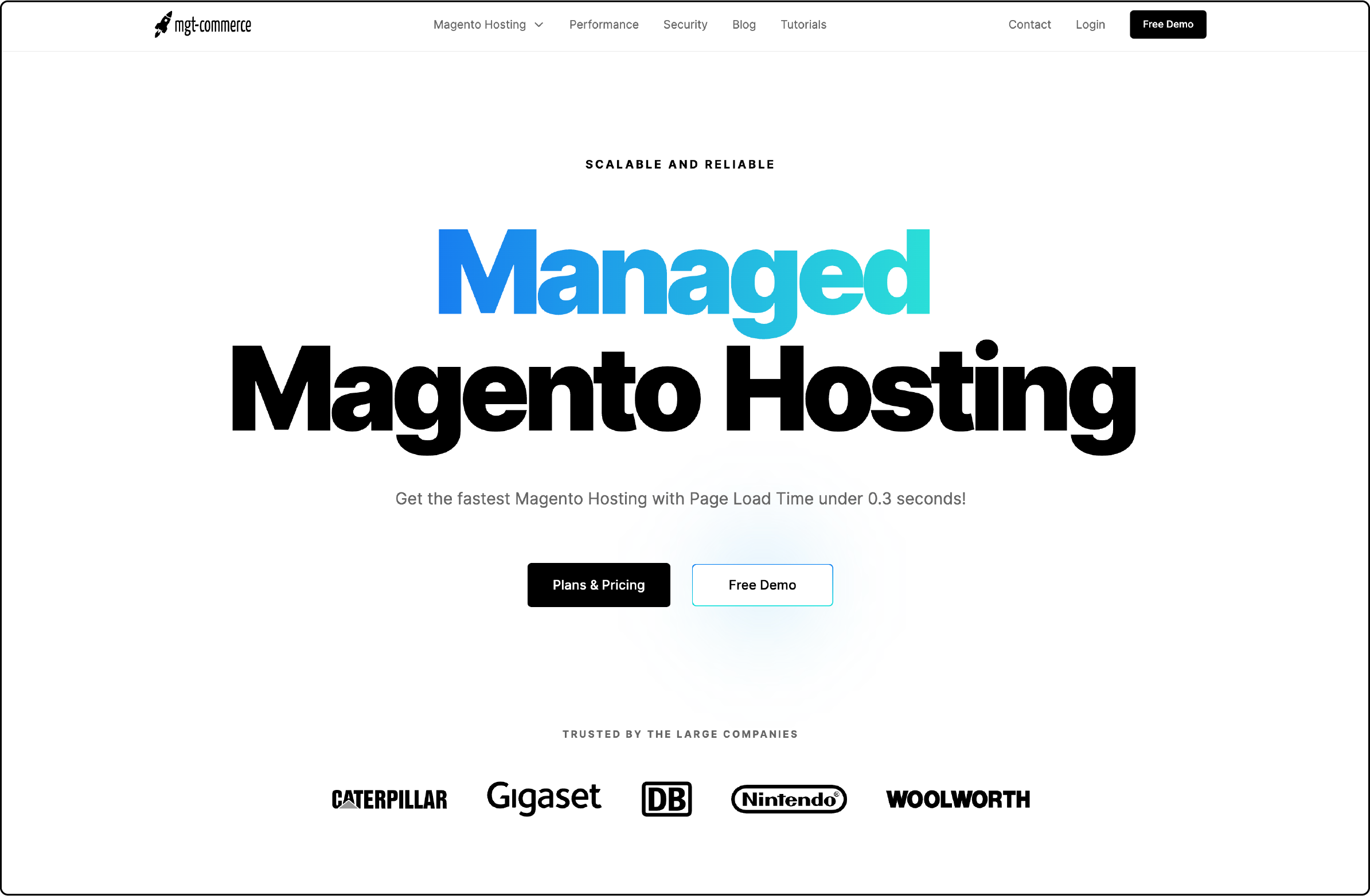
Magento History: 2007-2024 Timeline, Growth, and Versions
Magento’s history shows the platform has emerged as a key player in digital sales platforms. It is one of the most popular platforms for ambitious ecommerce owners looking for a flexible and affordable solution. This article explores Magento's history, uncovering how it shaped the world of ecommerce. Let’s discover Magento's journey, from its early days to becoming an Adobe powerhouse.
Key Takeaways
-
Explore Magento's journey from its 2007 inception to becoming an Adobe powerhouse.
-
Learn how Magento addressed evolving merchant needs and improved user experience.
-
Discover Magento Marketplace's role in offering merchants modules and solutions.
-
Understand the benefits of using Magento Commerce Cloud for ecommerce solutions.
-
Explore the history of Magento's version and its impact on ecommerce.
The Origin of Magento

In 2007, Varien. Inc. introduced the beta version of an ecommerce platform known as Magento. Roy Rubin and Yoav Kutner introduced the platform. It was a new open-source ecommerce platform ready to fill the gaps left by osCommerce.
Magento’s founders wanted shop owners to have a powerful and easy platform that could change to fit different needs. It was one of the main reasons to use PHP, a popular web development language that ensures many developers could work with Magento.
The duo released Magento's first public version in March 2008. The version quickly caught on because it gave businesses more control over online selling. Store owners could customize the frontend aspects of their online shops without hitting the limits other platforms had back then.
Magento Through the Years: A Timeline
The Early Years: 2007-2010
In 2007, Magento began as an open-source project led by Roy Rubin and Yoav Kutner. The new platform allowed users to create unique stores, offering easy customization. For the next two years, Varien owned Magento.
By 2008, Magento had grown and crossed over 500,000 downloads, making it one of the fastest-growing ecommerce platforms. The company released version 1.0 of Magento Community Edition, also known as Magento CE. Many business owners chose it because of the flexibility it offered. During this period, developers added more features and fixed any problems with the platform.
By 2010, Magento had become a popular platform, and Varien rebranded its business as Magento Inc. The company emerged as an ecommerce software company. During this time, Magento had crossed over 1.5 million downloads, and Magento’s mobile version was also launched.
The Growth Phase: 2011-2015
Magento grew fast from 2011 to 2015. More and more online stores picked Magento for its strong features and flexibility. During this time, the platform launched Magento Enterprise Edition, also known as Magento EE.
In February 2011, Magento got its first big investment from eBay, which owned PayPal. It was a big step that offered better payment options for small and medium-sized businesses competing with big brands. By the end of the year, Magento developers started working on version 2.0. On February 1, 2012, Magento confirmed 4 million downloads. The same month, co-founder Yoav Kutner left the company. The platform kept getting better with new updates. It added ways to help store owners manage their products easier and gave shoppers a smoother online shopping experience. These changes helped make sure Magento stayed ahead in the ecommerce game.
In 2014, Magento launched a new version for retail store owners. The goal was to maintain a low cost while offering Magento’s exceptional features. Following that, Magento partnered with New Relic in 2015. The partnership is crucial as it meant Magento store owners gained more control over store data, and analytics improved.
On November 3, 2015, Magento was launched again as an independent company funded by Permira. Later the same month, Magento 2 was released.
Magento is an ecommerce leader: 2016 - 2018
In 2016, Magento announced its upcoming partnership with Adobe. The same year, Magento-based ecommerce owners sold $101 billion in merchandise to nearly 51 million shoppers.
In 2017, Gartner named Magento as the leader in Digital Commerce. In the same year, Magento renamed its products as follows:
- Magento Community Edition became Magento Open Source
- Magento Enterprise Edition became Magento Commerce,
- Magento Enterprise Cloud Edition became Magento Commerce, and
- Magento Commerce Order Management became Magento Order Management.
On August 31, 2017, Magento celebrated its 10th anniversary, and Forrester named it a leader in the B2B segment. The same year, Magento Open Source 2.2 was released, and Magento Commerce (Cloud) represented 40% of new Magento bookings.
The Adobe Acquisition: 2018-Present
Officially, Adobe acquired Magento in 2018. The deal was closed at a whopping $1.68 billion. The acquisition meant store owners and developers had access to cutting-edge tools and features. With Adobe's vast resources, Magento could offer even better services and innovate faster. Magento announced a new Partnership with Yotpo. Later, the company announced the launch of Magento Payments.
In 2019, Adobe announced the availability of PWA studio and introduced Adobe Commerce Cloud. Later, the company announced the introduction of the Amazon Sales channel in Magento.
On 14 April 2020, AI-powered product recommendations for Magento Commerce became available. The same year, Adobe announced the end-of-life of Magento 1, and support for the software ended.
Adobe has made a big difference in how ecommerce sites run on Magento. They added more advanced analytics, marketing capabilities, and cloud services to empower online businesses. They also ensured seamless integration with other Adobe products, which improved workflows for Magento users worldwide.
Magento Version History and Its Impact on Ecommerce

Magento has greatly changed since it started. In 2007, the first Magento version came out and was free for anyone to use. The open-source software quickly grew popular because people could customize and improve it.
More features, like ways to handle many products and orders, were added over time. It helped businesses improve online sales and revenue. Magento improved at handling search engines and marketing tools. It also made shopping online safer for customers.
When Adobe bought Magento in 2018, they invested in making it work well with other products. The decision helped make Magento one of the top choices for online stores that want total control over their websites.
Here is a table showing Magento’s version history:
| Version | Release Date | Notable Features |
|---|---|---|
| Magento 1.0 | August 31, 2007 | The initial release of Magento’s beta version. |
| Magento 1 | March 2008 | Release of the Magento Community edition. |
| Magento 1.5 | February 2011 | Introduction of the Magento Connect extension marketplace. |
| Magento 1.9 | May 2014 | The last major release for Magento 1 with various improvements. |
| Magento 2.0 | November 2015 | Complete platform overhaul, improved performance, and scalability. |
| Magento 2.1 | June 2016 | Added features like Content Staging and Elasticsearch. |
| Magento 2.2 | September 2017 | Enhanced security, new tools, and improved developer experience. |
| Magento 2.3 | November 2018 | Introduction of PWA Studio, GraphQL, and Progressive Web Apps. |
| Magento 2.4 | January 2020 | Focus on security, performance enhancements, and Adobe Stock integration. |
| Magento 2.4.3 | July 2021 | Enhancements in security, infrastructure, and performance. |
| Magento 2.4.4 | July 2022 | Improved security, enhancements, and features like Open Graph meta tags. |
| Magento 2.4.5 | July 2023 | Latest release. (future releases may have occurred since then). |
Key Features that Make Magento Stand Out
Magento has established itself as a leader in the ecommerce landscape to empower retailers. Its exceptional flexibility and comprehensive tools deliver an unmatched ability to tailor ecommerce stores to specific business needs.
Here are the platform's key features:
1. Advanced Functionalities
You can handle multiple Magento stores from one place. It allows different languages and currencies and uses a set of pricing rules to offer customers special deals. Your ecommerce website can also connect to systems like accounting software or customer relationship management tools.
You can set complex shopping options for buyers, like personalized products or special discounts based on what's in their cart. With Magento, it is easy to offer a wide range of services that make shopping at your store a great experience.
2. Customization and Versatility
Store owners can customize their online shops to meet unique needs. You can use many different Magento themes and plugins to add new features or change your store's appearance.
Developers find it easy to work with because Magento is open-source, so they can tweak the code as needed. Magento's versatility also helps businesses grow without having to switch platforms. It works well for small online shops and big brands like Coca-Cola and Nespresso.
3. Effective Product and Inventory Management
Magento manages products and inventory for your online store. It lets you track stock levels, set notifications for low inventory, and easily handle backorders. Store owners can show customers how many items are left of each product, encouraging buying.
Magento also makes managing different types of products simple – whether they're physical goods or services. You have tools to create bundles, grouped items, and Magento virtual products. It helps your customers find what they need while shopping on your site.
4. SEO and Digital Marketing Capabilities
Magento helps improve your shop’s visibility on the internet. It has tools that let you change page titles, keywords, and descriptions to match what your customers search for. It makes it easier for people to find your products using Google or other search engines.
You can also use features in Magento to attract more visitors with targeted ads and emails. The platform also allows you to add blog posts, which can help keep your buyers interested and informed.
5. Security and Data Protection
Magento provides strong tools to help store owners keep their sites safe. Features like Magento CAPTCHA, two-factor authentication, and secure payment gateways are part of the Magento platform. The features help keep customer information private and defend Magento stores against online threats.
The platform regularly releases updates that include Magento security patches. It ensures that vulnerabilities get addressed and resolved quickly. Developers find it easy to maintain best practices for web safety with Magento’s built-in mechanisms. They can manage user permissions and create backups effortlessly.
It complies with the top standards for data encryption, which safeguards sensitive data during transactions. You can also ensure compliance with stringent data protection regulations like GDPR for Magento sites.
MGT- Commerce: Your Magento Hosting Partner
MGT- Commerce has 12 years of expertise in the managed Magento hosting segment. The company has served over 5000 Customers worldwide. It offers reliable Magento hosting services for SMBs and large-scale companies.

The hosting service positively impacts your Magento site’s performance and security. With a managed hosting service like MGT-commerce, your Magento store can experience a fast page-load speed of under 0.3 seconds!
It ensures PWA readiness, SSL certification, DDoS protection, and smooth integration with various Magento extensions. The company provides Magento hosting with flexible pricing that suits your changing needs.
FAQs
1. What is the history of Magento's development and innovation?
Magento's history of development and innovation dates back to its initial release in 2007. It was founded with a vision to create a versatile ecommerce platform. Over the years, Magento has gone through several versions, introducing new features, scalability, and security enhancements.
One of its significant milestones was the launch of Magento Commerce Cloud, which offers cloud-based solutions to cater to the evolving needs of e-commerce businesses. Magento's open-source nature has encouraged a vibrant community of developers, creating numerous modules and extensions available through Magento Marketplace.
2. How has Magento evolved to address the needs of merchants and improve user experience?
Magento's evolution has been marked by its commitment to merchant-centric improvements. It introduced Magento Commerce Cloud, simplifying hosting and scalability issues for businesses. The platform's extensive marketplace also provides modules for enhanced functionality and seamless integrations.
To improve user experience, Magento focused on innovations like responsive design and mobile optimization, ensuring that online stores perform seamlessly across devices. Moreover, its content management capabilities empower merchants to create engaging shopping experiences.
3. Can you explain the benefits of using Magento Commerce Cloud?
Magento Commerce Cloud is a robust platform that brings scalability, security, and migration ease to the forefront for merchants. Its scalable architecture ensures businesses can seamlessly expand as they grow, handling increased traffic and demands without setbacks.
It safeguards sensitive customer data and protects against cyber threats, instilling user trust. The ease of migration simplifies the transition to Magento Commerce Cloud, making it an attractive choice for businesses seeking a powerful and secure ecommerce solution.
4. What role has Magento Marketplace played in offering modules and solutions to merchants?
Magento Marketplace offers a wide array of modules and solutions that significantly augment the functionality of Magento stores. It is a marketplace for developers and merchants, enabling seamless access to extensions, themes, and plugins.
It ensures the quality and security of these offerings. The platform has empowered businesses to improve user experience and address diverse merchant needs.
5. How does Magento handle database management and source code?
Magento has exhibited exceptional prowess in managing databases and source code. The platform employs a structured approach to database management, allowing for efficient data storage, retrieval, and manipulation.
The platform’s commitment to open-source principles has resulted in a well-structured and highly customizable source code base. It has enabled developers and store owners to ensure a flexible and reliable foundation for ecommerce businesses.
Summary
A walk through Magento's history reveals that it has emerged as one of the leading platforms for ecommerce businesses. Its growth and features have helped many online stores succeed. Magento’s success story shows how ecommerce keeps getting stronger. Adobe is making it better for businesses, big and small. The platform will likely lead the way in helping millions of store owners build profitable online businesses.
Discover more about Magento versions and their influence on online retail. Explore reliable managed Magento hosting services to boost your Magento-based ecommerce store.



